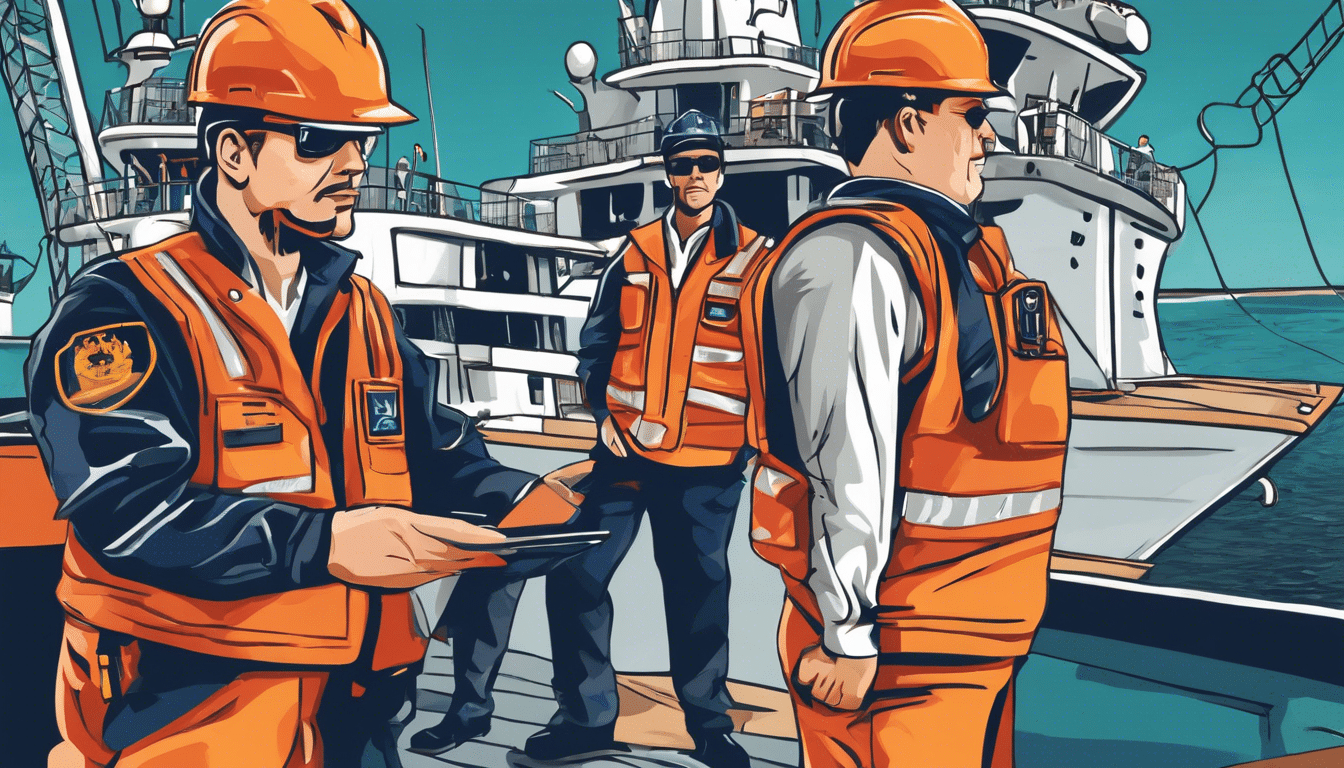The maritime industry plays a crucial role in global trade, making the security of port facilities paramount in ensuring the safety of goods and personnel. Central to this security strategy is the role of the Port Facility Security Officer (PFSO), whose responsibilities encompass a broad range of activities directed towards safeguarding port assets against potential threats. This article explores the multifaceted duties and responsibilities of a PFSO, outlines the regulatory frameworks governing their activities, and discusses best practices for maintaining security compliance within maritime operations. By understanding the significance of the PFSO role, stakeholders in the maritime sector can enhance their security measures and ensure compliance with international standards.
Key Takeaways
- The Port Facility Security Officer (PFSO) plays a crucial role in safeguarding maritime security.
- PFSOs are responsible for conducting risk assessments and developing security plans for port facilities.
- Understanding international regulations, such as ISPS, is vital for PFSOs to ensure compliance.
- Implementing best practices, like regular training and drills, enhances security preparedness in maritime operations.
- Effective communication and collaboration with stakeholders are essential for successful PFSO duties.
Understanding the Role of a Port Facility Security Officer (PFSO)
The role of a Port Facility Security Officer (PFSO) is critical in ensuring the safety and security of maritime transport systems, particularly in an era where global trade is increasingly vulnerable to security threats. A PFSO is responsible for developing, implementing, and maintaining the security plan of a port facility, aligning with both national and international regulations such as the International Ship and Port Facility Security (ISPS) Code. This officer conducts thorough risk assessments, identifies security vulnerabilities, and establishes protocols to mitigate potential threats. Furthermore, PFSOs are tasked with training staff, conducting security drills, and ensuring that all personnel comply with established security measures. Their role not only helps manage day-to-day security activities but also plays a significant part in fostering collaboration between port authorities, shipping companies, and governmental agencies. By prioritizing stringent security measures, a PFSO contributes to the overall resilience of maritime supply chains, safeguarding the movement of goods across borders and enhancing the integrity of international trade.
Key Duties and Responsibilities of a PFSO
A Port Facility Security Officer (PFSO) plays a crucial role in safeguarding port facilities and ensuring compliance with international maritime security regulations. One of the key duties of a PFSO is to conduct regular security assessments and audits, identifying potential vulnerabilities and implementing appropriate security measures. Additionally, the PFSO is responsible for developing and maintaining the Port Facility Security Plan (PFSP), which outlines protocols for preventing and responding to security incidents. Furthermore, the PFSO must ensure that all personnel are adequately trained in security awareness and emergency response procedures, fostering a culture of security vigilance among staff. Communication with other security agencies and port stakeholders is also imperative, as the PFSO must coordinate efforts for enhancing overall security effectiveness. Finally, the PFSO is tasked with creating security reports and maintaining records of security incidents, assessments, and training activities, which are essential for compliance with the International Ship and Port Facility Security (ISPS) Code. By fulfilling these responsibilities, a PFSO helps to secure maritime operations and protect critical port infrastructures.
‘Security is not a product, but a process.’ – Bruce Schneier
Regulatory Framework Governing PFSO Activities
The regulatory framework governing the duties and responsibilities of Port Facility Security Officers (PFSOs) plays a crucial role in ensuring security compliance in the maritime industry. Under the International Ship and Port Facility Security (ISPS) Code, adopted by the International Maritime Organization (IMO), PFSOs are tasked with specific duties that include conducting security assessments, developing and implementing security plans, and ensuring ongoing security training for staff. Compliance with these regulations is paramount, as it not only safeguards port facilities but also enhances global maritime security. Furthermore, national legislation complements the ISPS Code by providing detailed guidelines on the appointment and operational procedures for PFSOs, reinforcing the importance of their role in mitigating security risks associated with port operations. Understanding the complexities of PFSO duties and responsibilities is essential for industry stakeholders seeking to uphold security standards and protect international trade.
Best Practices for Ensuring Security Compliance in Maritime Operations
Ensuring security compliance in the maritime industry is a multifaceted challenge that demands a thorough understanding of the PFSO duties and responsibilities. The Port Facility Security Officer (PFSO) plays a crucial role in maintaining the security standards mandated by the International Ship and Port Facility Security (ISPS) Code. To effectively implement security compliance, PFSOs must conduct regular risk assessments to identify vulnerabilities and potential threats to port facilities. They should also develop and maintain a Port Facility Security Plan (PFSP) that outlines security measures, procedures, and emergency response plans, ensuring they are regularly updated and communicated to all stakeholders.
Training personnel on security awareness and protocols is equally essential, as it empowers staff to recognize suspicious activities and adhere to security procedures. Regular drills and exercises should be conducted to test the readiness of the security measures in place. Furthermore, PFSOs must liaise with local law enforcement and port authorities, fostering collaborative relationships that enhance overall security efforts. Finally, frequent audits and inspections are critical to ensuring adherence to regulatory requirements, allowing PFSOs to maintain an ongoing compliance posture. By understanding and fulfilling these duties, PFSOs can significantly contribute to enhancing security compliance in the maritime industry.
Virtual Maritime Academy is a leading provider of online maritime education and training, offering a wide range of courses designed to meet the needs of the global maritime industry. With a commitment to quality and innovation, Virtual Maritime Academy is dedicated to preparing seafarers and maritime professionals for success in their careers. Now a DNV Certified Maritime Training Provider, the academy upholds the highest standards of excellence in training and education.






